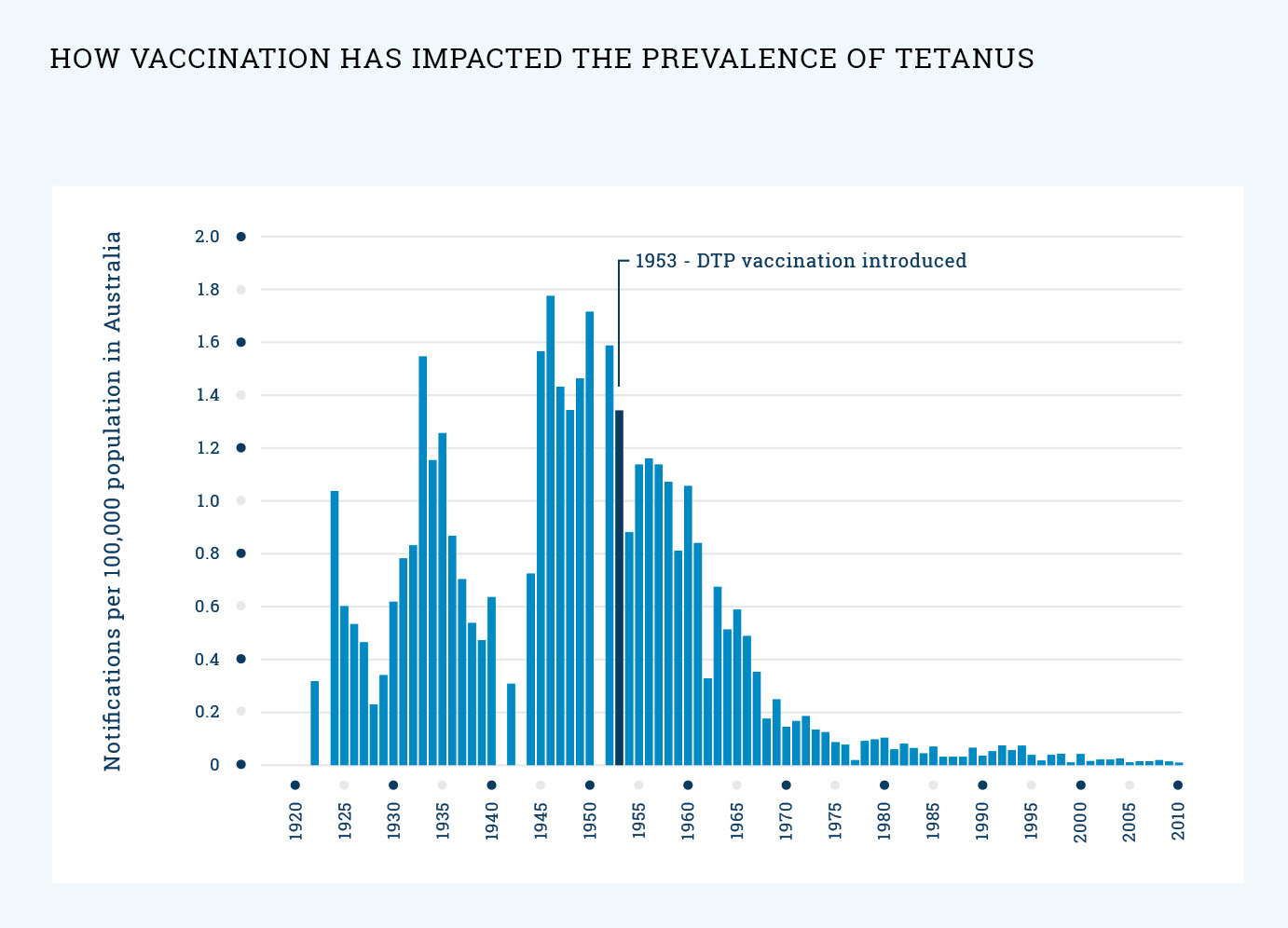Tetanus
Key facts
-
Tetanus affects all the muscles in a person’s body, including the muscles used for breathing.
-
About 2 per cent of people with tetanus will die. The risk is greatest for the very young and the very old.
-
Vaccines are the best way to protect your child from tetanus.
On this page
- What is tetanus?
- What will happen to my child if they catch tetanus?
- What vaccine will protect my child against tetanus?
- When should my child be vaccinated?
- How does the tetanus vaccine work?
- How effective is the vaccine?
- Will my child catch tetanus from the vaccine?
- What are the common reactions to the vaccine?
- Are there any rare and/or serious side effects to the vaccine?
- What impact has vaccination had on the prevalence of tetanus?
